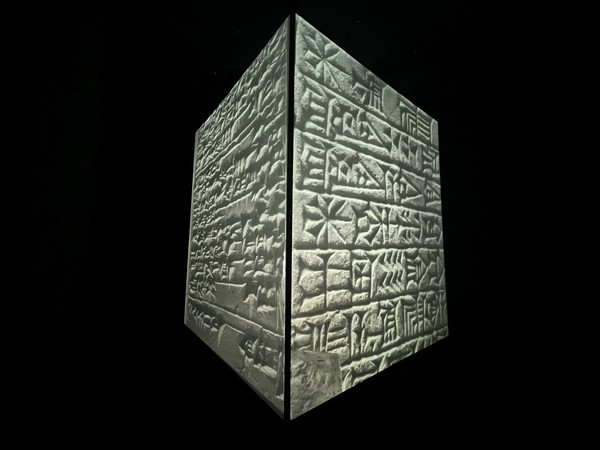
Imagine you are Indiana Jones and explore ancient sites. It would be interesting to be an archaeologist and study ancient artifacts hitherto unknown to mankind. The ancient civilization that gives us mysteries is the "unknown world," still wondering about ancient lives in modern times. This SMT reporter visited "Mesopotamia: Great Cultural Innovations, Selections from The Metropolitan Museum of Art," which deals with the Mesopotamian civilization, one of the four ancient civilizations. Let's go to Mesopotamia and explore their mysterious culture.

Where civilization first started
When people think of the four major civilizations, they usually think of the Egyptian civilization first. Mesopotamian civilization, whose value is not widely known due to Egyptian civilization's renown, was the first to form a city in the history of mankind. The Mesopotamian civilization, located between the Tigris and Euphrates rivers in what is now Iraq, was able to grow crops on fertile land around the river. This led to the introduction of an economic system based on trade and the use of written language to make economic activities efficient. This is now known as cuneiform script, and since its invention, it has been possible to record trade activities and transactions and to express abstract concepts. Also, the invention of writing served as an opportunity to further develop art, architecture, and religion. This exhibition is the first permanent exhibition in Korea under the theme of Mesopotamia and shows the history of its civilization through relics.
This exhibition is being held at the National Museum of Korea in Yongsan-gu, Seoul. To get there from campus, walk 10 minutes from SMWU to Sookmyung Women's University subway station and take line 4 heading toward Samgakji. After 3 stops, get off at Ichon Station and head to exit 2. After about a 5-minute walk from the station, you will arrive at the National Museum of Korea. The exhibition is being held at the World Art Gallery on the third floor of the permanent exhibition hall. It is free, so a reservation is not required.


The wonders of ancient relics
The exhibition consists of three parts in total. The first section, "Cultural Innovation," with the theme of cities born during the Mesopotamian civilization, is mainly explained through bowls. A total of 13 wedge-shaped clay tablets and 11 seals are displayed, with detailed explanations added to each artifact. The first section was equipped with an electronic device that interpreted the wedge letters of the clay plate documents so that you could understand those on display in detail. One of the relics displayed there, the Votive Bowl, was designed to be dedicated in a temple to express faith and make wishes come true. The bowl's surface is engraved with wedge letters devoted to the goddess. In the second part, "Art and Identity," viewers can realize the Mesopotamians' lives through seals with dueling scenes and animal-like paintings. Therefore, viewers can imagine their daily lives worshipping a god or gathering foraging. It also gives a glimpse of Mesopotamian artistic sensibilities when people see the delicacy of the sculpture.
The last section, "Empire's Age," displays characteristic artifacts from the two empires representing Mesopotamian civilization: the Neo-Assyrian Empire and the Neo-Babylonian Empire. Two of the Panels with Striding Lions, that lined the Processional Way from the Ishtar Gate, the best known in Mesopotamian architecture, are on display. Seeing such delicate works, people can feel the high level of brickmaking technology. There are also various forms of other exhibits. There is a video of stamping the seal submitted to the exhibition and a video containing the curator's explanation. It is not just looking at the relics on display, but seeing them being used, making visitors feel as if they lived in that era. In the video room, there is a 4-meter-high media cube that screens videos of Mesopotamian civilization's worldview and artistic achievements. The Media Cube shows land and rivers that symbolize Mesopotamia, seals that show the identity of individuals and groups, and wedge letters that closely recorded daily life. Visitors can feel the grandeur and simultaneously understand its distant origins. Near the exit of the exhibition hall, there is even a space where you can touch clay plates engraved with wedge letters, so people can enjoy a more realistic exhibition.

Rating: ★★★★☆
This exhibition displays the relics of Mesopotamian civilization in three main themes and contains explanations related to them one by one. The relics are displayed to be seen up-close, so this reporter could examine them in more detail. It raises visitors' interest by making it possible to experience content in unusual ways. However, for those who are unfamiliar with it or have no interest in the subject of ancient civilization, the exhibition can feel challenging. This SMT reporter recommends this to those who want to learn about the background knowledge of ancient civilizations.


